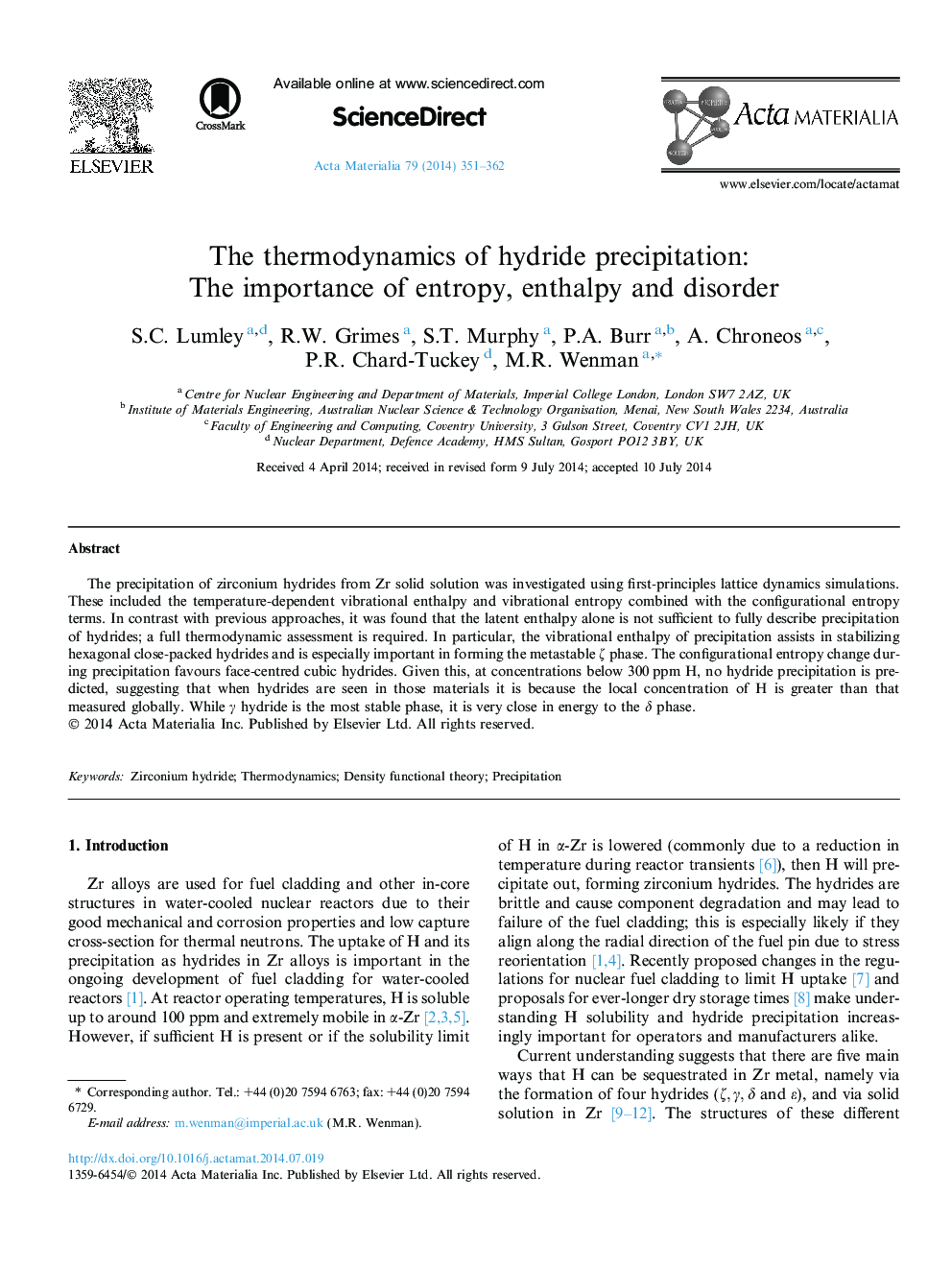| Article ID | Journal | Published Year | Pages | File Type |
|---|---|---|---|---|
| 7881225 | Acta Materialia | 2014 | 12 Pages |
Abstract
The precipitation of zirconium hydrides from Zr solid solution was investigated using first-principles lattice dynamics simulations. These included the temperature-dependent vibrational enthalpy and vibrational entropy combined with the configurational entropy terms. In contrast with previous approaches, it was found that the latent enthalpy alone is not sufficient to fully describe precipitation of hydrides; a full thermodynamic assessment is required. In particular, the vibrational enthalpy of precipitation assists in stabilizing hexagonal close-packed hydrides and is especially important in forming the metastable ζ phase. The configurational entropy change during precipitation favours face-centred cubic hydrides. Given this, at concentrations below 300 ppm H, no hydride precipitation is predicted, suggesting that when hydrides are seen in those materials it is because the local concentration of H is greater than that measured globally. While γ hydride is the most stable phase, it is very close in energy to the δ phase.
Related Topics
Physical Sciences and Engineering
Materials Science
Ceramics and Composites
Authors
S.C. Lumley, R.W. Grimes, S.T. Murphy, P.A. Burr, A. Chroneos, P.R. Chard-Tuckey, M.R. Wenman,
